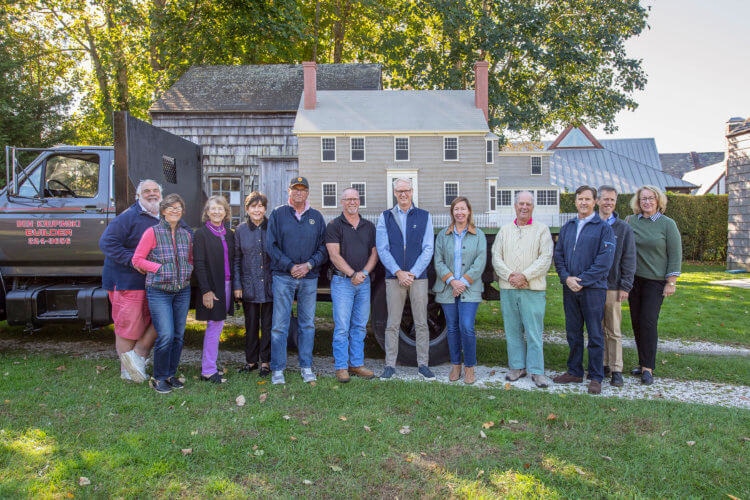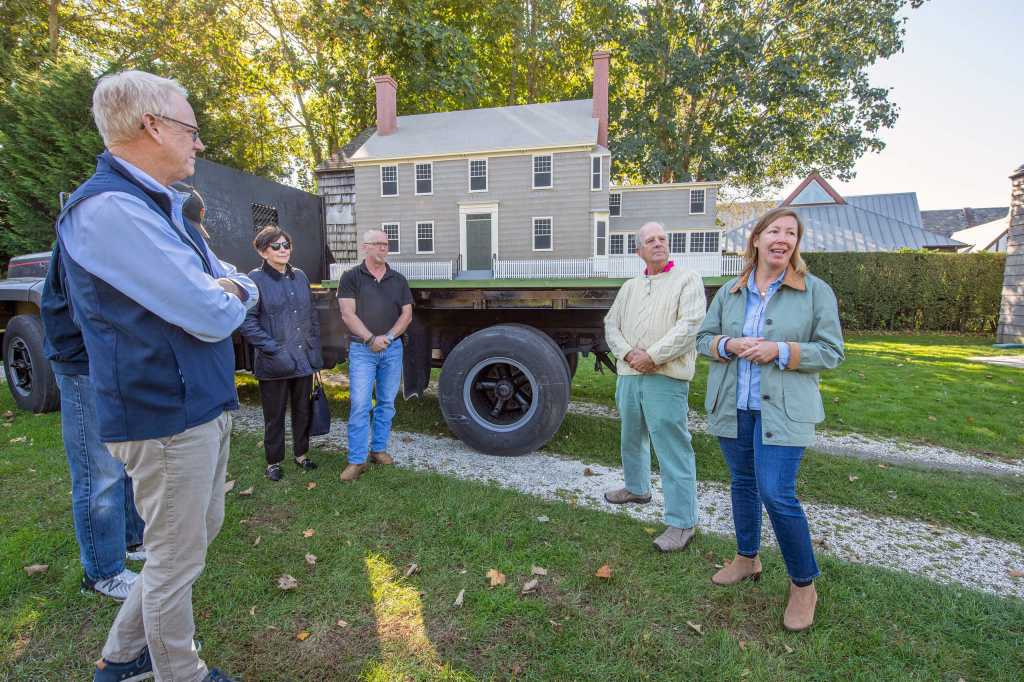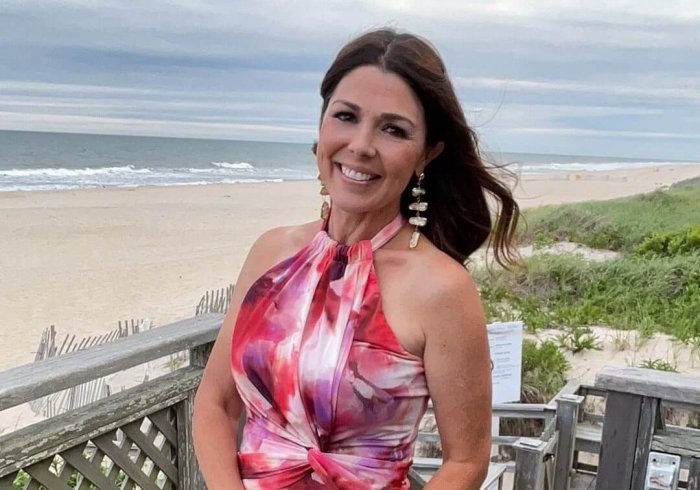A model of the historic Village of East Hampton Hall now sits among landmark buildings at Mulford Farm.
A dedication ceremony for the model was held there on Saturday, October 23, putting a cap on the village’s centennial celebration, which was held a year late due to the COVID-19 pandemic. The scaled replica of the important building in East Hampton history was the idea of Village Trustee Rosemary “Rose” Brown and built by Ben Krupinski Builder of East Hampton, whose principal Ray Harden donated the materials and manpower.
The eight-by-eight-by-four-foot model with extraordinary details, down to the white picket fence in front of Village Hall, was first unveiled during the village’s 100th-anniversary parade on September 25.
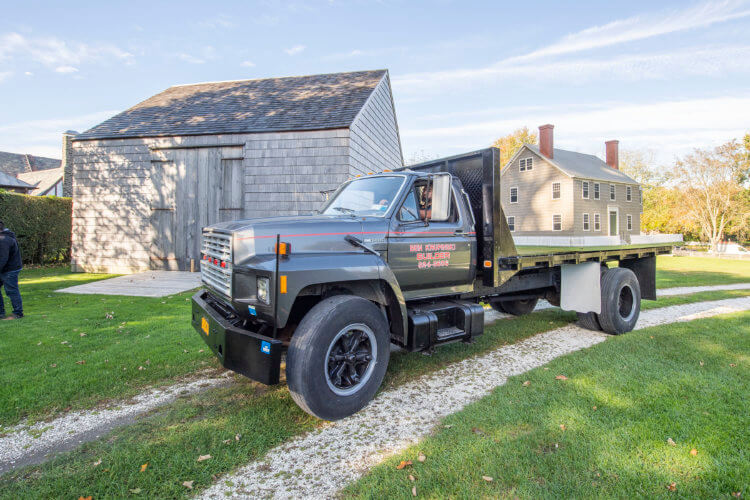
The dedication ceremony held last weekend was led by Village trustees Brown and Arthur “Tiger” Graham and attended by board members of the East Hampton Historical Society.
“I had this idea, ‘Wouldn’t it be great to showcase Village Hall?’,” Brown said at the dedication. She called Harden, a village resident and former fire chief, who readily agreed to assist in the project. “As soon as I called Ray, before I got the ask out, he said, ‘Of course, I’ll help out!'”
Known as the Beecher-Hand House, the building dates to the mid-18th century, but its name stems from a resident that came to East Hampton to be the pastor of the remote farming village. After several years of boarding with local families, the Rev. Lyman Beecher and his wife bought the lean-to shingled house, which would later be described as saltbox, in 1800, according to a history of the building by Averill D. Geus. The couple fixed it up considerably over the years so much so that others followed suit.
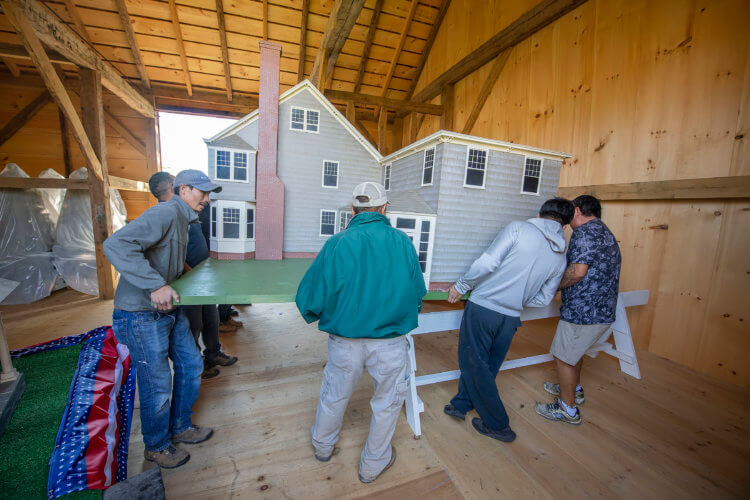
“From the pastorate in East Hampton, Beecher went on to become the most prominent minister of his generation,” Geus wrote. “He is credited with being the man who ended dueling in America, a result of a sermon preached in East Hampton in 1806, after the death of Alexander Hamilton. He became the country’s leader of the Temperance movement. He was scathing in his criticism of those who sold rum to the Montauk Indians in exchange for the corn they needed to keep from starving in the winter.”
His children went on to do great things, as well. His daughter Harriet Beecher Stowe, born after the family left East Hampton, is the author of Uncle Tom’s Cabin, and Abraham Lincoln even described her as “the little lady who started the big war.” Another daughter, Catherine Beecher, was the first American home economist and a son, Henry Ward Beecher, became the best-known clergyman of the 19th century.
Reverend Beecher sold the house in 1810 to Abraham Hand, a sixth-generation descendent of John Hand of Kent, England and one of the 35 original proprietors of East Hampton.
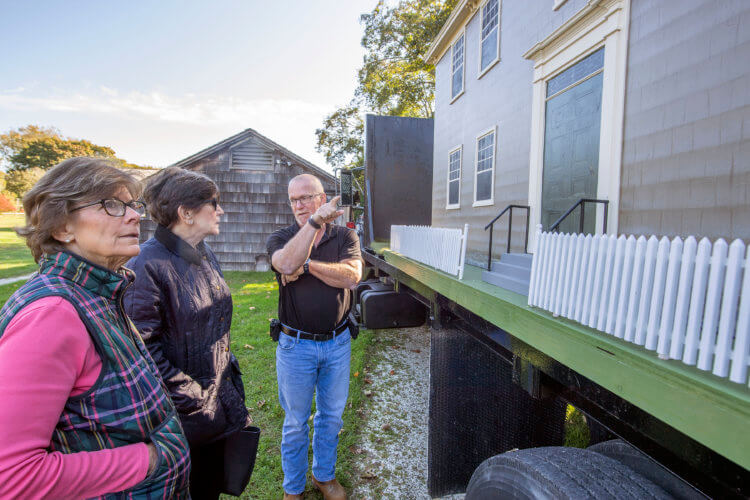
To protect the building’s significant presence at 86 Main Street, the Village of East Hampton bought the building in 1994. It underwent a significant renovation to convert it for the purposes of a Village Hall, while also preserving the building’s character.
Construction on the model began in 2019, based on sketches from James McMullan, the principal of East Hampton-based Fleetwood & McMullan Architects. It was hand-painted with trompe-l’œil details, a style of painting in which objects are depicted with photographically realistic detail, by Dave Mims of Mims Family Painting, based in Shirley.
The model, along with a model of the historic Clinton Academy, now sits under the roof of the 1770 Hedges-Edwards barn at Mulford Farm on James Lane, a complex overseen by the East Hampton Historical Society. Ben Krupinski Builder also donated the models and restoration of the historic barn in recent years.
Email tvecsey@danspapers.com with further comments, questions, or tips. Follow Behind The Hedges on Twitter, Instagram and Facebook.
